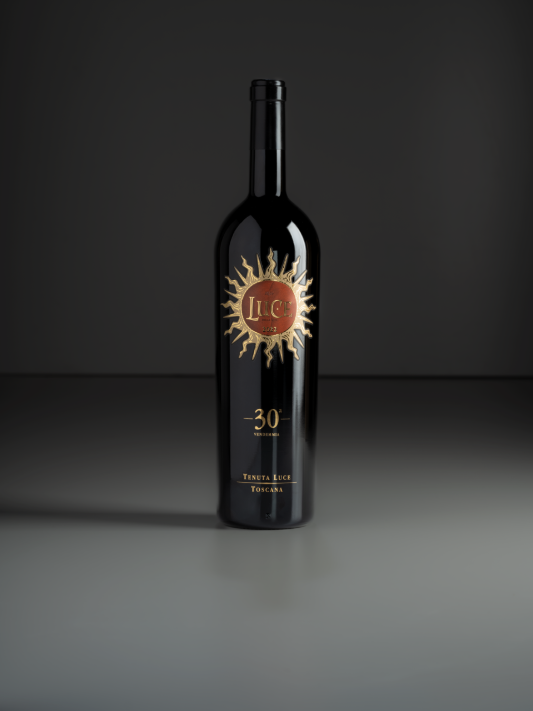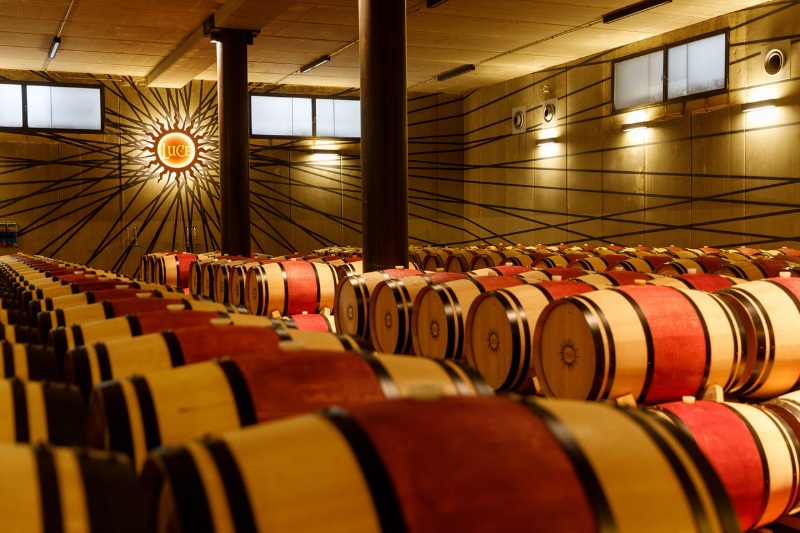Wine-loving Boomers, who in the 1990s were just reaching their midlife plateaus at a time when their wine-collecting proclivities were peaking, will remember it as a time when Robert Mondavi, having outgrown California, was searching South America and Europe for wine-producing liaisons, both younger and older. One of the latter was the Frescobaldi family of Florence, who had been in the wine business since the early 1300s but who were nevertheless infatuated by this flamboyant Italian-American family from Napa Valley who themselves barely had three generations of experience as pickers and cellar masters.

One result of the liaison was Luce, which, like all love children, was rightly looked upon as being “special,” blending traditional Sangiovese and migrant Merlot against a backdrop of conservative Montalcino harrumphing.
Luce turned 30 last vintage, and I recently traveled to New York to participate in a birthday party at Christie’s, the auction house overlooking Rockefeller Center. Below, both children and adults were at play outside FAO Schwarz.
Rather than eating birthday cake, we were invited to sample 10 of the 30 vintages, beginning in 1994 and ending in a 2022. As winemaker Alessandro Marini reminded us, the Mondavis and the Constellation step-parents said goodbye to Luce around the 2005 vintage, leaving her to mature in the hillsides of Tuscany.
Marini then carved up Luce lineage into roughly three periods: The era of the 1990s as one that “showed more fresh characteristics,” from 2000s up to around 2013 as “wines that wanted to impress by showing their fruitiness,” and the vintages thereafter as ones “emphasizing more elegance.”
It would be difficult and perhaps unfair to review in depth and rate the vintages tasted, especially the older ones, as they tend to fluctuate in how they present aromas, flavors and even structure more radically when exposed to air than do younger vintages that may change little even overnight.
All 10 were marked by lots of tannins. I tasted in reverse, starting with early vintages and finishing with the 2022.
A few notes on each vintage:
1994: Lovely oak aromas but muddled and declining fruitiness; nevertheless, it showed very good acidity, and is still lovely in overall terms.
1999: This was a little closed, with warm flavors and texture akin to gingerbread, showing lots of baking spices.
2002: Excellent, with lots of depth and complexity. This was lean and leathery yet not spare, showing notes recalling prunes and dried fruits.
2005: Carbon and sooty notes like a wine throwing sediment; this was also showing some caramel character, walnut-ty tannins, and good tartness in finish.
2009: This vintage was showing fresher cherry flavors, smooth but still firm with lots of tannins leading to a fruity finish.
2013: Again, carbon notes were showing in this vintage, lighter in weight than the average for the set; still tightly wound and a little puckery.
2015: Darker in pigmentation, showing purplish fruits and softer texture than its siblings; though somewhat light, it displayed very good length of flavors.
2016: This showed a little petrol on the nose, with good structure making it seem muscular, but with a dollop of watery neutrality at mid-palate.
2019: Lovely roundness of fruitiness was evident in this vintage, but with some savory notes to balance those out, with an overall impression recalling fine wines of the Medoc.
2022: Complex, with notes recalling Luxardo cherries, this was nutty and very tannic; great now, it will be greater still when Luce’s 40th anniversary rolls around.
The overall impression is that the Sangiovese tannins provide an excellent balance to Merlot’s exuberance in these wines, and that the tannins begin to dominate after about two decades. Overall, great wines, as expected—ones that justify their highly distinguished pedigree.
Robert would have been proud.

